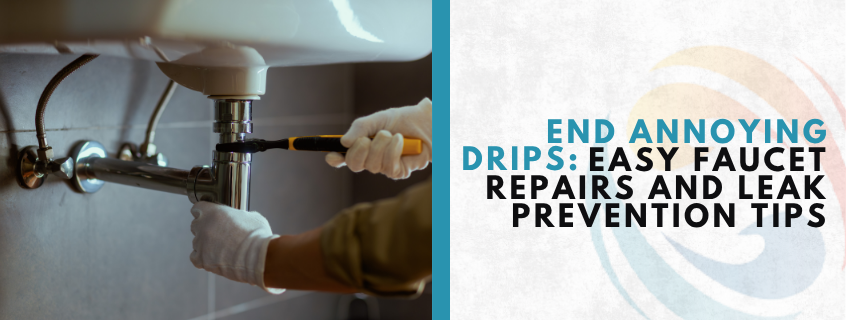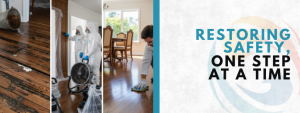A dripping faucet in El Segundo is more than a minor annoyance it wastes water, increases utility bills, and may even cause long-term damage to your home. While a slow drip might seem harmless, over time, the water wasted can add up to hundreds or even thousands of gallons each year. Beyond water waste, a persistent drip can cause rust stains, mineral buildup, and even water damage to cabinets, flooring, and walls.
Understanding the common causes of faucet leaks and learning how to fix dripping faucet problems can help homeowners save money, protect their property, and maintain a more efficient plumbing system. In addition, knowing how to stop a leaky faucet early can prevent small issues from turning into costly repairs.
Common Reasons Faucets Drip in El Segundo Homes
1. Worn-Out Washers
Washers are small rubber or silicone pieces that create a tight seal between the faucet handle and the valve seat. Over time, friction and constant use can wear down washers, causing leaks.
Signs of worn washers include:
- Water dripping even when the faucet is off
- Unusual noise or squeaking when turning the handle
- Loose or wobbly faucet handles
Replacing worn washers is typically a quick and inexpensive repair that most homeowners can handle themselves with basic tools. When replacing washers, it’s important to select the correct size and type for your faucet model to ensure a tight seal and prevent future leaks.
2. High Water Pressure
Excessive water pressure can put stress on your faucet’s internal parts, leading to leaks. This is especially common in older homes in El Segundo that may have outdated plumbing systems.
Indicators of high water pressure:
- Sudden bursts of water flow from the faucet
- Dripping that occurs at certain times of the day
- Frequent leaks even after recent repairs
3. Corroded Valve Seats
The valve seat is the connection point between the faucet body and the spout. Over time, mineral deposits and corrosion can form on the valve seat, preventing a proper seal and causing continuous leaks.
Signs of a corroded valve seat:
- Dripping continues after replacing washers
- Rust-colored stains appear around the faucet base
- Water pools around the sink
If a leak has already caused damage, immediate action is essential. Residents can search for fast water damage restoration near me to quickly address serious leaks and prevent further damage.
How Dripping Faucets Affect Your Water Bill
Even a minor drip can waste a significant amount of water. A faucet that drips once every few seconds may seem harmless, but over time, this can waste hundreds or even thousands of gallons annually. For homes that use hot water, this also increases energy costs because the water heater is constantly working to heat water that isn’t being fully utilized.
In addition to higher bills, persistent leaks can cause damage to cabinets, floors, or walls. Over time, moisture can lead to warping, mold growth, or staining. Promptly addressing faucet leaks not only conserves water but also prevents costly repairs and helps maintain a safe and healthy home environment. In severe cases, ongoing leaks may require water damage cleanup to restore affected areas.
Step-by-Step Guide: How to Fix Dripping Faucet
Repairing a faucet can be straightforward if you follow these steps carefully:
1. Turn Off the Water Supply
Before starting any repair, locate the shutoff valves under the sink and turn them clockwise to stop the water flow. Open the faucet to release any remaining water in the pipes. This step ensures that you can safely disassemble the faucet without a mess.
2. Disassemble the Faucet
To follow the steps on how to fix dripping faucet, remove the handles and internal parts carefully. It’s helpful to take photos of each step to make reassembly easier and keep screws and small parts organized in a container to prevent losing them.
3. Inspect and Replace Damaged Parts
Examine washers, O-rings, seals, and the valve seat for wear or damage. Replace any parts that appear cracked, brittle, or corroded.
Common parts replaced include:
- Rubber washers
- O-rings
- Valve seats
- Cartridge (for cartridge-type faucets)
Using the correct replacement parts is crucial to ensure a proper seal and prevent leaks from recurring.
4. Reassemble and Test
Once all worn parts have been replaced, reassemble the faucet in the reverse order of disassembly. Turn the water supply back on and check for leaks. If the faucet still drips, it may indicate a more serious issue, such as a corroded valve seat or internal damage, which requires a professional plumber. In extreme cases, persistent leaks may need water removal services to prevent flooding or long-term damage.
Extra Tips for El Segundo Residents
Preventing future leaks is just as important as repairing current ones. Homeowners in El Segundo can take these steps to extend the life of their faucets:
- Clean aerators regularly to prevent mineral buildup
- Avoid over-tightening faucet handles, which can wear out washers prematurely
- Inspect faucets periodically for signs of wear or leaks
- Consider installing a water softener to reduce corrosion caused by hard water
Protect Your Home and Save Money in El Segundo
Learning how to fix dripping faucet problems is about more than stopping a leak—it helps homeowners conserve water, lower utility bills, and protect their homes from potential damage. Even minor drips can lead to water pooling, warped cabinets, or damaged flooring, sometimes requiring professional help. Water Damage Restoration El Segundo offers expert services to address leaks and restore affected areas efficiently. Identifying the root causes—such as worn washers, corroded valve seats, or high water pressure—allows you to prevent bigger problems. Regular maintenance, including inspecting seals, cleaning aerators, and checking faucets for wear, keeps your plumbing system leak-free. Acting promptly prevents water damage, allows for proper water damage cleanup, saves money, and ensures your home remains safe, comfortable, and fully functional.







